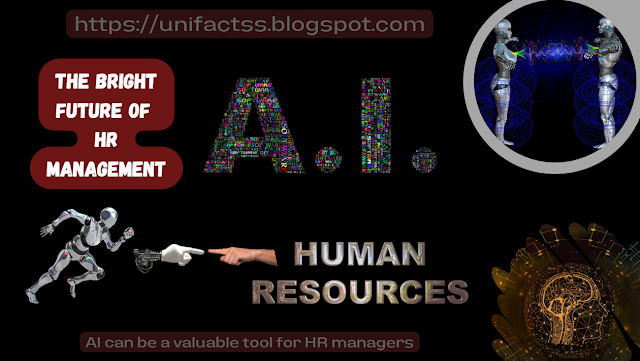Large language models can create abstracts or offer ideas for future research Papers, Write Thesis statements, Letter Writing, Copywriting, Formal letters, and Short, and Graph papers. But these AI tools are still in development.
 |
| Copyrights Reserved @ https://unifactss.blogspot.com/ |
You're probably familiar with the text autocomplete feature that makes using your smartphone so handy? Now, tools built on the same principle have advanced to the point where they aid researchers in writing Papers in the analysis and writing of scientific publications/ papers/ paragraphs, the generation of code, and idea generation.
The instruments are derived from natural language processing (NLP), a branch of artificial intelligence with the goal of assisting computers in "understanding" and even producing content that is legible by humans like Informal Letter, Report Writing, Celtx, Paragraph Writing, Creative Writing, Hemingway Editor, Owl Purdue, Personal Statement and Personal Statement Examples. These technologies, known as large language models (LLMs), have developed into both research tools and study objects.
Read More >>> Matter of Facts @ Universe
Can an AI write a paper?
How does AI help in writing?
Can AI write scientific papers?
Can artificial intelligence write?
Your next paper would be assisted by AI (ai. ai).
Common man problems regarding the writing of the paper or any other documentation:
"I try to find somebody new to get information about how to write a paper and how to read literature like a professor's notes. BUT DON'T KNOW WHO?"
BUT Now Using AI a lot can be done i.e Research Paper, Write
Thesis Statement, Letter Writing, Copywriting, Formal Letter, Shortlyai, Graph Paper
LLMs are neural networks that have been taught to process and, in particular, produce language using enormous amounts of text. In 2020, OpenAI, a research facility in San Francisco, California, developed the most well-known LLM, GPT-3, by teaching a network to anticipate the subsequent text based on the previous text. Researchers have been astounded by the writing's uncannily human-like quality on Twitter and elsewhere. And anyone can now use it to generate text based on a prompt thanks to the OpenAI programming interface. Prices begin at approximately US$0.0004 for every 750 words processed, which is a measurement that includes both reading the challenge and producing the response.
Computer scientist Hafsteinn Einarsson of the University of Iceland in Reykjavik claims, "I think I use GPT-3 nearly every day." He uses it to gather comments for his paper abstracts. In one case, which Einarsson presented at a conference held in June, the algorithm's recommendations to add material that was already there in his essay were unhelpful. However, some suggestions, like "making the research topic more obvious at the start of the abstract," were more beneficial. According to Einarsson, it can be challenging to spot errors in your own writing. "You have two weeks to think about it, or you can ask someone else to look at it. GPT-3 may be that "someone else."
1. Logical Reasoning
Some researchers employ LLMs to produce paper titles or to improve the readability of material. With the GPT-3, Mina Lee, a computer science Ph.D. student at Stanford University in California, asks questions like, "Using these keywords, generate the title of a study." She employs AI-powered writing assistance called Wordtune from AI21 Labs in Tel Aviv, Israel, to edit problematic passages. I basically conduct a brain dump when I write a paragraph, she claims. I simply select "Rewrite" until I discover a more polished version that I like.
Domenic Rosati, a computer scientist at the Brooklyn, New York-based technology startup Scite, utilizes an LLM called Generate to structure his thoughts. Generate was created by Cohere, a Toronto, Canada-based NLP company. It functions quite similarly to GPT-3. Rosati explains, "I write notes or just doodles and thoughts and I say, 'Summarize this' or 'Turn this into an abstract. "As a synthesis tool, it's incredibly helpful to me."
In fact, language models can aid in the planning of experiments. Pictionary was used by Einarsson for one study to gather language data from participants. GPT-3 recommended many game versions after hearing about the game. Theoretically, researchers could request novel interpretations of existing experimental procedures. Lee, on the other hand, requested GPT-3 to come up with ideas for how to introduce her lover to her parents. It recommended visiting a restaurant beside the water.
2. Coding & Encoding
GPT-3 was trained by OpenAI researchers on a wide range of literature, including books, news articles, Wikipedia entries, and computer code. The team then discovered that GPT-3 could finish sentences of code just like it could with other types of text. In order to optimize the system, the researchers named it Codex and trained it on more than 150 gigabytes of text from the code-sharing website GitHub1. Codex has now been incorporated by GitHub into the Copilot service, which offers code suggestions as users' input.
At least half of the staff at the Allen Institute for AI (commonly known as AI2) in Seattle, Washington, according to computer scientist Luca Soldaini, utilize Copilot. Soldaini claims that it works best for repeated programming and gives the example of a project where boilerplate code is written to handle PDFs. It just says, "I hope this is what you want," and then leaves it at that. Occasionally, it's not. Soldaini claims that as a result, they take care to utilize Copilot only for languages and libraries that they are familiar with in order to detect issues.
3. Academic Searches
The most well-known use of language models is probably in literature search and summary. Using a linguistic model known as TLDR (short for too long; didn't read), AI2's Semantic Scholar search engine, which covers 200 million publications, largely from computer science and biology, produces tweet-length summaries of each article. A previous model called BART developed by academics at the social media network Facebook and improved on human-written summaries is whence TLDR gets its name. (TLDR only has roughly 400 million parameters, which makes it a small language model by today's standards. GPT-3's largest version has 175 billion in it.)
TLDR can also be found in AI2's Semantic Reader, a program that improves academic papers. In Semantic Reader, when a user clicks on an in-text reference, a popup appears with information that includes a TLDR summary. According to Dan Weld, chief scientist at Semantic Scholar, "the aim is to take artificial intelligence and bring it right into the reading experience."
Weld claims that frequently, "there's a problem with what people charitably term hallucination" when language models produce text summaries, but "is truly the language model just utterly making something up or lying?" On tests of truthfulness2, TLDR does reasonably well; authors of works TLDR was asked to describe gave it a 2.5 out of 3 accuracy rating. Weld claims that this is due in part to the summaries' short length of 20 words and in part to the algorithm's rejection of summaries that use unusual words that are absent from the original text.
In terms of search tools, the machine-learning non-profit Ought in San Francisco, California, released Elicit in 2021. A table of ten papers is produced when you ask to Elicit a question like, "What are the effects of mindfulness on decision-making?" Users can instruct the software to populate columns with content like abstract summaries and metadata, as well as details about the subjects of studies, their methods, and their outcomes. To extract or produce this information from publications, Elicit uses technologies like GPT-3.
Every time he begins a project, Joel Chan, a researcher at the University of Maryland in College Park who specializes in human-computer interactions, employs Elicit. When I don't know the appropriate language to search in, it works incredibly well, he claims. Gustav Nilsonne, a neuroscientist at the Karolinska Institute in Stockholm, utilizes Elicit to look for publications that have data he can add to pooled studies. He claims the technology has suggested papers that he hadn't discovered through prior searches.
4. Responsive Models
AI2 prototypes offer a glimpse into the potential of LLMs. After reading a scientific abstract, researchers may have questions, but they may not have the time to read the entire report. A group at AI2 created a tool that, at least in the area of NLP, can respond to similar queries. Researchers were instructed to read the abstracts of NLP studies before posing questions about them, such as "what five dialogue qualities were analyzed?" After reading the complete papers, the panel next requested responses from additional researchers. In order to answer various inquiries regarding other papers, AI2 trained a version of its Longformer language model on the resulting data set. This model can absorb an entire document rather than only a few hundred words as other models can.
In comparison, MS2, a data set of 470,000 medical documents and 20,000 multi-document summaries, was used to fine-tune BART to enable researchers to take a question and a set of documents and generate a quick meta-analytical summary. ACCoRD is a model that can generate definitions and analogies for 150 scientific concepts related to NLP.
Beyond text production, there are other applications. On Semantic Scholar documents, AI2 improved BERT, a language model developed by Google in 2018, to build SciBERT, which includes 110 million parameters. Scite, a company that uses AI to build scientific search engines, further improved SciBERT so that when it includes publications that cite a certain paper, it classifies them as either supporting, contradicting, or otherwise mentioning it. According to Rosati, this subtlety makes it easier for individuals to spot flaws or holes in the material.
Papers are condensed into concise mathematical representations by AI2's SPECTER model, which is also based on SciBERT. Weld claims that Semantic Scholar uses SPECTER to suggest papers based on a user's library and conference organizers use it to match submitted papers to peer reviewers.
The Hebrew University of Jerusalem and AI2 computer scientist Tom Hope claims that additional research initiatives at AI2 have improved language models to pinpoint potent medicine combinations, links between genes and disease, and scientific problems and directions in COVID-19 research.
Can language models, however, lead to greater understanding or even discovery? With Eric Horvitz, Microsoft's chief scientific officer, and others, Hope and Weld co-authored a review5 in May that outlines obstacles to achieving this, such as instructing models to "[infer] the effect of recombining two notions." In reference to OpenAI's DALLE 2 image-generation model, Hope remarks, "It's one thing to generate a picture of a cat soaring into space. How, though, will we proceed from there to fusing highly abstract, technical scientific concepts?





0 Comments
Dear Readers, i started this blog to share information gathered from Researches and Journals...Accurate Information is being delivered...comment ur suggessions